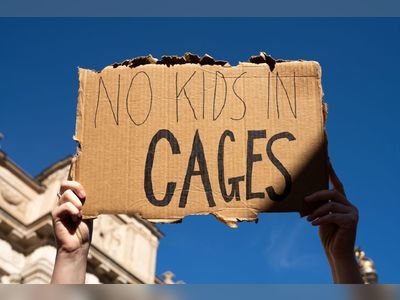
Australian Leaders Address Housing Affordability Ahead of Election
Prime Minister Anthony Albanese and Opposition Leader Peter Dutton present competing housing policies amid rising affordability concerns.
As housing affordability remains a pivotal issue for Australian voters, both Prime Minister Anthony Albanese and Opposition Leader Peter Dutton have unveiled their respective policies aimed at assisting young people in purchasing homes.
During a recent press conference, Albanese addressed the challenges posed by immigration on housing availability and public services, while a protestor expressed frustration over the housing crisis, highlighting growing concerns among citizens unable to secure rental properties.
In response, Peter Dutton asserted his ambition to become the 'Prime Minister for home ownership, home affordability, and home accessibility,' positioning housing as a central theme of the Coalition's campaign.
In his budget-in-reply speech, Dutton outlined several initiatives designed to tackle housing affordability issues:
- Reduction of the permanent migration program by 25 percent,
- Implementation of stricter limits on foreign students,
- Allocation of $5 billion to fund essential infrastructure,
- Allowance for first home buyers to access up to $50,000 from their superannuation funds for home deposits.
Dutton's plan to cut the migration program is projected to free up approximately 100,000 homes for Australian residents, with 40,000 expected in the first year.
However, specific details regarding which migrant categories would face cuts have yet to be disclosed, with Dutton promising further information before the impending election.
The Coalition's initiative to allow first home buyers access to their superannuation has garnered mixed responses, as critics question its overall effectiveness, while the government defends it as a means to assist individuals in entering the housing market.
Additionally, skepticism surrounds the feasibility of the Coalition's proposed $5 billion infrastructure investment, which aims to support the creation of 500,000 new homes.
The success of these funds largely hinges on whether they are distributed as grants or concessional loans to local governments.
Labor has characterized the Coalition's housing projections as unrealistic, suggesting that the funding would yield approximately 70,000 newly constructed homes at best.
Dutton also proposed a two-year ban on foreign investors and temporary residents purchasing existing homes, a commitment echoed by the Labor party earlier this year.
On Labor's side, the government has defended its $10 billion Housing Australia Future Fund, which aims to facilitate the construction of 20,000 new social housing properties over five years beginning in 2024. Albanese attributed delays in the project to opposition from the Greens and Coalition, asserting that his government is currently overseeing significant housing developments.
The government also plans to create 20,000 new affordable homes through the National Housing Accord and allocated $33 billion in its budget to combat housing affordability.
Key strategies include a shared equity program for first home buyers, where the government can cover up to 40 percent of the purchase price, alongside initiatives to expedite building processes by investing $50 million in innovative construction methods.
Price caps are set at $1.3 million in New South Wales, $950,000 in Victoria, and $1 million in Queensland and the Australian Capital Territory.
As the election approaches, housing affordability continues to dominate the political discourse, reflecting the pressing concerns of citizens facing challenges in securing homes.
During a recent press conference, Albanese addressed the challenges posed by immigration on housing availability and public services, while a protestor expressed frustration over the housing crisis, highlighting growing concerns among citizens unable to secure rental properties.
In response, Peter Dutton asserted his ambition to become the 'Prime Minister for home ownership, home affordability, and home accessibility,' positioning housing as a central theme of the Coalition's campaign.
In his budget-in-reply speech, Dutton outlined several initiatives designed to tackle housing affordability issues:
- Reduction of the permanent migration program by 25 percent,
- Implementation of stricter limits on foreign students,
- Allocation of $5 billion to fund essential infrastructure,
- Allowance for first home buyers to access up to $50,000 from their superannuation funds for home deposits.
Dutton's plan to cut the migration program is projected to free up approximately 100,000 homes for Australian residents, with 40,000 expected in the first year.
However, specific details regarding which migrant categories would face cuts have yet to be disclosed, with Dutton promising further information before the impending election.
The Coalition's initiative to allow first home buyers access to their superannuation has garnered mixed responses, as critics question its overall effectiveness, while the government defends it as a means to assist individuals in entering the housing market.
Additionally, skepticism surrounds the feasibility of the Coalition's proposed $5 billion infrastructure investment, which aims to support the creation of 500,000 new homes.
The success of these funds largely hinges on whether they are distributed as grants or concessional loans to local governments.
Labor has characterized the Coalition's housing projections as unrealistic, suggesting that the funding would yield approximately 70,000 newly constructed homes at best.
Dutton also proposed a two-year ban on foreign investors and temporary residents purchasing existing homes, a commitment echoed by the Labor party earlier this year.
On Labor's side, the government has defended its $10 billion Housing Australia Future Fund, which aims to facilitate the construction of 20,000 new social housing properties over five years beginning in 2024. Albanese attributed delays in the project to opposition from the Greens and Coalition, asserting that his government is currently overseeing significant housing developments.
The government also plans to create 20,000 new affordable homes through the National Housing Accord and allocated $33 billion in its budget to combat housing affordability.
Key strategies include a shared equity program for first home buyers, where the government can cover up to 40 percent of the purchase price, alongside initiatives to expedite building processes by investing $50 million in innovative construction methods.
Price caps are set at $1.3 million in New South Wales, $950,000 in Victoria, and $1 million in Queensland and the Australian Capital Territory.
As the election approaches, housing affordability continues to dominate the political discourse, reflecting the pressing concerns of citizens facing challenges in securing homes.


























